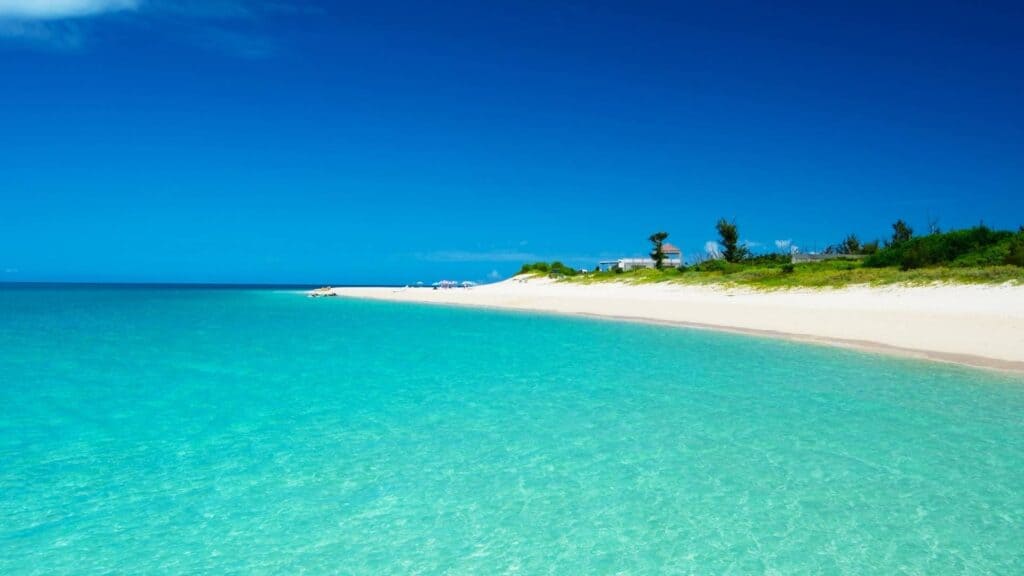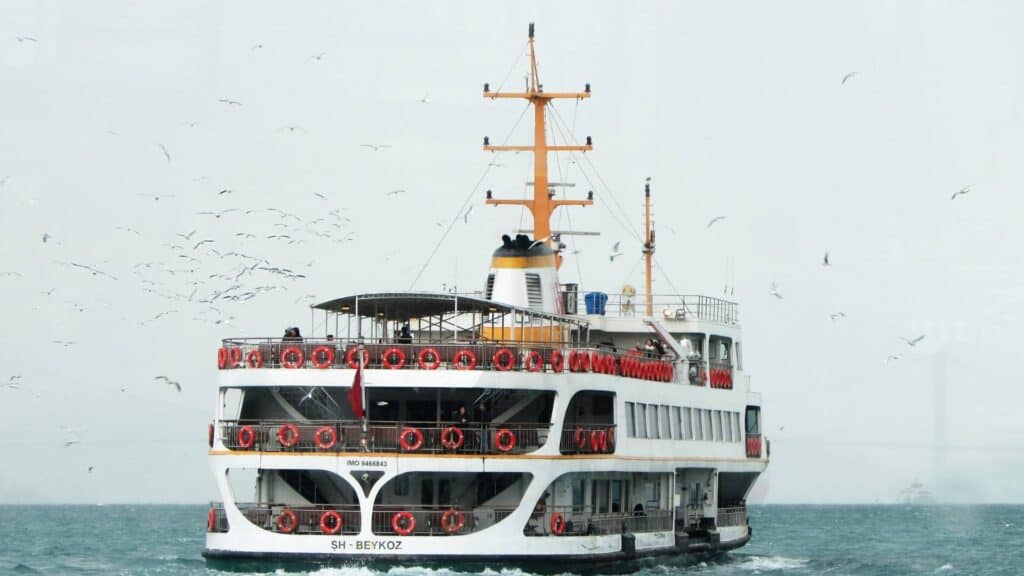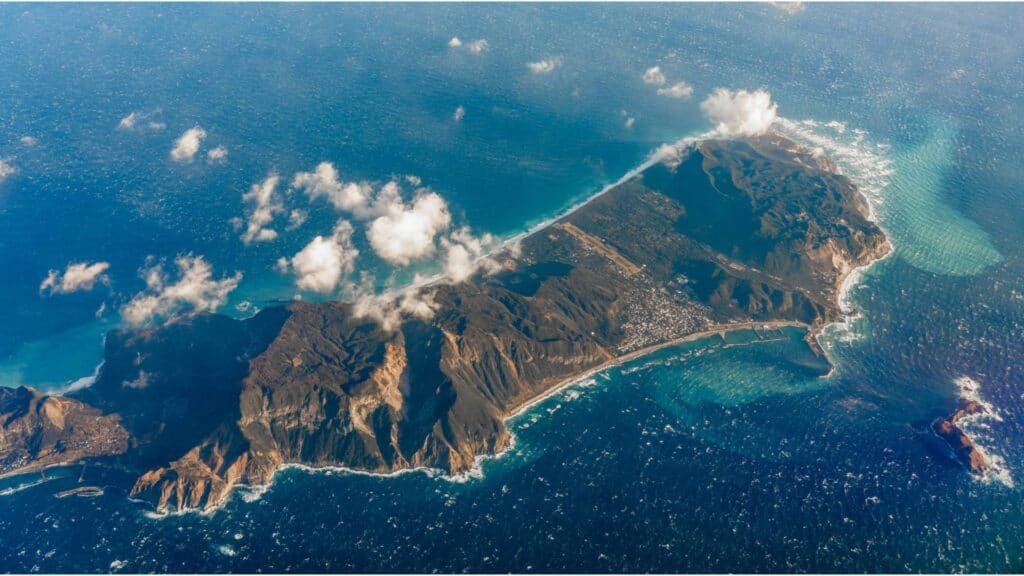When you think of islands in Japan, you probably imagine Okinawa or places far removed from urban centres. However, did you know that Tokyo actually encompasses 11 islands? Indeed, Niijima is one of those hidden gems. In this section, I’ll share my experience of visiting Niijima, highlighting must-visit locations, transportation options, and some secret spots introduced to me by the locals.
One of the best ways to explore Tokyo is to visit the local areas and immerse yourself in the local culture. If you want to explore local areas, we have created scavenger hunt adventures personalised to your interests, filled with fun facts, clues and puzzles. If you’re curious, you can check out the games here! Check out the Flip Japan Games here! |
Getting to Know Niijima
First, let me give you a quick overview of Niijima. Around 2,700 people live on this island and numerous oceanic species and birds migrate through Niijima. You can even spot sperm whales and humpback whales from here. Niijima is a popular destination for surfing, boasting good waves for most of the year.
The beaches are long and sandy, facing various directions, so no matter the wind, you can always catch some waves. Interestingly, during the Edo period, Niijima served as a place of exile for convicts and was once the venue for significant international surfing competitions.
Let me tell you a bit about the sights on Niijima. We were only on Niijima for 2.5 days but managed to visit many incredible places on the island. We rented bicycles to cycle around, which I highly recommend since the roads aren’t too busy and you can easily stop to explore different spots and take photos.
Beaches of Niijima
Firstly, the pristine beaches of Niijima are an absolute must-see, offering a spectacular blend of natural beauty and serene atmosphere that you won’t want to miss.
Honson-Maehama Beach

This beach was the first we visited upon arriving in Niijima. It has calmer waves compared to other beaches due to a seawall that blocks off the waves, making it a popular spot for families and children. Honson-Maehama is closest to the village, hence very convenient with numerous restaurants nearby. In the summer, floating islands and stalls are set up where people can engage in stand-up paddleboarding and sea kayaking.
Habushiura Beach

Habushiura is one of the most beautiful beaches I have ever visited. Located on the east coast, it is the longest beach on the island and a famous spot for surfers. It was where international surfing competitions once took place. The beach, about 6.5 km long, is bordered by Koga volcanic cliffs and is a nationally protected reserve.
Mamashita Beach

Now, I want to tell you about my favorite spot on the island, Mamashita Beach. During the 2.5 days we were there, we visited this place twice and spent a lot of time there. The second time I visited, I did an Instagram live to show you in real-time just how beautiful it was.
Mamashita Beach is surrounded by cliffs and located along the southwest part of Niijima. The coastline offers many secluded spots to admire the view, including a glimpse of Mt. Fuji on a clear day. You will be surprised by how blue the ocean is. The water is so clear. Since the ground is a Koga stone mining area, the place is scattered with stones, so make sure to have your flip-flops handy.
Other Must-Visit Spots
Torigashima
Next to Mamashita Beach, you will find Torigashima, an island that rises right off the coast. Apparently, there used to be a ropeway base for carrying out the Koga stones from the stone mountain on the opposite side. There is also a very cool carved staircase to help you climb around the ocean side to watch the sunset.
Yunohama Roten Onsen
Next to Mamashita Beach, you will find Torigashima, an island that rises right off the coast. Apparently, there used to be a ropeway base for carrying out the Koga stones from the stone mountain on the opposite side. There is also a very cool carved staircase to help you climb around the ocean side to watch the sunset.
Like most of the volcanic Tokyo islands, Niijima also has hot springs. Once you’re done enjoying Mamashita Beach and Torigashima, you can visit Yunohama Roten Onsen, which is right next to Mamashita Beach, about a 5-minute walk away. It is a large outdoor bath built in an ancient Greek-style ruin. It offers stunning panoramic views of the setting sun and the Pacific Ocean.
The view and the entire experience are very special. You can see far out to the horizon from Yunohama Roten Onsen. They have a few baths for you to choose from, so you can enjoy the view from different spots. The amazing part about this rotenburo is that it’s free for all to use. It’s also open 24 hours a day, so you can go whenever and however many times you please.
It is a mixed-gender bath, so you have to wear a swimsuit to enter, making it a great place to relax and enjoy the onsen with couples, families, and friends.
We came here during sunset, and the view was incredible. I would highly recommend you come and check it out for yourself.
Shinsui Koen
Another spot that I really enjoyed was Shinsui Koen, located near Mamashita Beach. Shinsui Koen, also known as “Niijima Water Park,” is a park created with the theme of harmony between Koga stone and water. The water in this park is drawn from a well. There is also a Rest House in the park for people to relax and eat in.
Besides these must-see spots, we checked out a few other special places as well. The owner of the place we stayed at, Tooru-san, was so kind and offered to drive us around the island. We went to a stone dinosaur park, which was super cool.
I love dinosaurs, and I think I spent a good 15-20 minutes there hanging out with them. We also checked out a secret spot, as the owner of the accommodation called it. It was a path that led to a staircase in the middle of the mountains, heading towards the beach. The view was spectacular there. We also went to two observatories, one during the day and one at night. In the day, we enjoyed the view of the island and the ocean, and at night, we got to see the stars.
The sky wasn’t very clear, but we still enjoyed looking out to the horizon and seeing the lights of Izu city from afar. Apparently, during winter, a lot of people come to stargaze in this area.
Art and Culture at Niijima

Niijima is renowned for its glass works and Moyai carvings. Various sculptures are carved from a special kind of local stone and are scattered all over the island. “Moyai” translates to “to come together” in the local dialect, symbolising the community-crafted artworks.
Due to COVID restrictions, we were able to explore the museums safely. The Niijima Glass Art Center, a highlight of the island, offers glassblowing sessions and showcases how the island’s glass works are produced. This center is a globally recognized venue that hosts the Niijima International Glass Art Festival every autumn.
Adjacent to it, the Niijima Glass Art Museum displays over 90 different works by glass artists from Niijima and beyond.
Also worth a visit is the Niijima Village Museum, located off Maehama Beach. The museum provides a comprehensive view of Niijima’s history and culture, from its pre-history to modern-day surfing culture. Notably, Niijima was historically a place of exile for convicts, and the museum offers detailed insights into this aspect of the island’s past. The information provided is bilingual, making it accessible even to those who do not speak Japanese.
Culinary Delights at Niijima

Unfortunately, due to COVID, many restaurants were closed during our visit. Nonetheless, we were still able to sample some local dishes.
The quality of the sashimi and seafood in Niijima is exceptional. You can also try a variety of island gourmet dishes, such as Ashitaba tempura and the small fish known as Kusaya.
Ashitaba, which translates to “tomorrow’s leaves,” is a local ingredient famed for its rapid growth; even if picked today, new buds will appear by tomorrow. It’s not commonly served outside this region and is highly nutritious, making it a must-try when in Niijima.
Kusaya, another local specialty, translates directly to “stinky fish.” It is salted, dried, and fermented fish, known for its health benefits. On our first night in Niijima, the restaurant operated by our accommodation hosts served us Kusaya.
I must admit, Kusaya was not to my taste; it has a very strong smell and a pungent flavour. I managed to swallow one bite but couldn’t continue. If you’re feeling adventurous, I recommend trying it for yourself to see if you like it.
Accommodation at Niijima

For our stay, we chose a delightful Minshuku, similar to a Bed and Breakfast. The hosts, Yuuko-san and Tooru-san, were incredibly generous and kind. Tooru-san, in particular, took a day off to drive us around Niijima, and the restaurant they run provided us with extra food at no additional cost.
We were allowed to check in early and linger in the accommodation until our ferry departure. The omotenashi—Japanese hospitality—was palpable and made our stay exceptionally comfortable. The accommodation, called Ipponmatsu, features Japanese-style rooms, a small rooftop terrace for relaxation, and shared living areas. The bathrooms and toilets were immaculately clean.
We paid 5,000 yen per person per night, which was excellent value for the experience. I’m certainly planning to return and stay here again. If you’re considering a visit to Niijima, I highly recommend staying at Ipponmatsu.
Access to Niijima

Many people might not enjoy the transportation aspect of a vacation, but I had a great time travelling to Niijima.
You can reach Niijima from the mainland via a jet boat or an overnight ferry from Takeshiba Sanbashi Pier. The jet boat takes about 2 hours and 20 minutes, while the overnight ferry takes approximately 9 hours. Alternatively, direct flights are available from Chōfu Airport in western Tokyo, taking around 45 minutes. Ferries also run to Niijima from Shimoda on the Izu Peninsula.
We opted for the overnight ferry to Niijima and returned on the jet boat to Tokyo. The overnight ferry was surprisingly comfortable, with plenty of amenities. The jet boat, developed by a US aircraft manufacturer, uses a jet engine to draw in seawater and expel it forcefully, lifting the vessel above the water.
Despite its high speed of 80 km/hour, the ride was not as bumpy as you might expect. Even though I’m prone to seasickness, I felt fine on the jet boat.
Concluding Our Journey in Niijima
I thoroughly enjoyed every aspect of my visit to Niijima and was amazed by how much fun it was, all just a ferry ride away from Tokyo’s city center. I’m eager to return soon, planning to stay longer, capture more videos, take more photos, and do more live streams to share just how remarkable Niijima is. If you have any questions or need more information about the places we visited, be sure to leave them in the comment section below.
Niijima, with its unique blend of natural beauty, cultural heritage, and warm hospitality, offers a captivating escape not far from the hustle and bustle of Tokyo. Whether you’re surfing on its stunning beaches, exploring its rich history, or just relaxing in its hot springs, Niijima provides a perfect blend of adventure and relaxation.
Don’t miss the chance to experience this hidden gem for yourself – it’s an adventure that’s closer than you think and will leave you with memories to last a lifetime.








